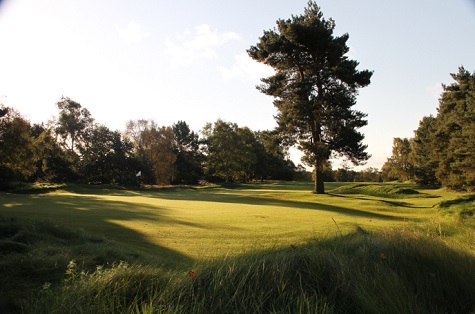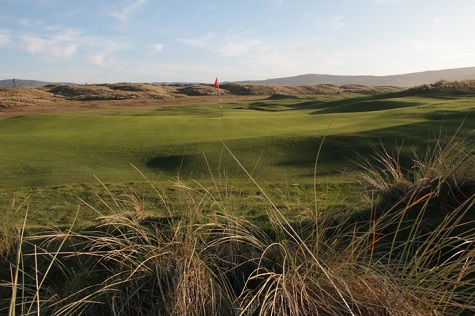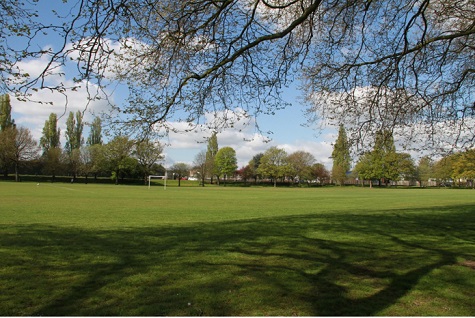
In the first of this series of articles, we sought to get a clearer definition of what sustainability is and what it means to an organisation, especially in the amenity horticulture sector. Sustainability comprises three pillars or components namely economic viability, environmental protection and social equity. The definition of these is important when any organisation seeks to become more sustainable, or indeed seeks to deliver more sustainable products and services to its customers. The remaining articles on this subject will now look more closely at various sub sectors of, and activities in amenity, and those providing services to them which hopefully will help all readers in their own search for sustainability. Last time we considered Sustainability In Practice.
This month we focus on some of those very much at the sharp end in amenity management, the green keeper and the parks manager/ supervisor. How can they put sustainability into practice?
These are challenging economic times with spiraling input prices, pressures on individual’s spending and more. The chill wind is reaching everyone and the pressures on those who manage and operate golf courses, related sports facilities and our parks and urban amenity spaces are high. However, despite all of this, those directly involved are still expected to produce high quality areas which are fit for purpose even though budgets are squeezed. So how can he or she focus on sustainability and how will that help?
Sustainability on the Golf Course
Firstly, a look at golf. From the outset, it is important to remember those three components of sustainability. The first key task in any situation is to be economically viable – in other words deliver to a budget. The cost of purchasing inputs such as machinery and fertilisers, as well as the overhead costs including labour, must be met by income generated, and so, can actions to improve sustainability contribute to reducing costs? The answer is yes. Sustainable practice is in my mind best defined as good practice. It is about adopting that integrated approach, developing a preventative culture in terms of weed, pests and diseases rather than a problem solving one and creating the very best conditions for grass growth and health which will inevitably lead to lower costs of its maintenance.
Just one example of such action is tree planting. Trees are fantastic means of carbon capture, provide landscaping and add to the player challenge. However planting in the right place is essential. A tree planted today is going to grow and this must be assessed at the outset. Many cases are reported now of trees planted 50 or so years ago looming over a fine turf playing surface. Grass, as we know, is a full sun loving plant and often will not perform very well in shade. Removal of these trees may be difficult but, in the overall picture of creating a more sustainable course with less turf disease, it may be absolutely the right thing to do. With less pesticides now available, the removal of trees (now in the wrong place) will assist directly in managing a fine turf playing surface, with less intervention for disease, as natural sunlight and improved airflow will assist greatly. It is sustainable practice in action, especially if new trees are also planted in the right place.

Enville GC
One more example of sustainable practice is the encouragement of eco rough around the site. Holistically managed eco rough reduces mowing and therefore reduces fuel costs, man hours, and carbon footprint. This can also have an added effect as more birdlife, flora and fauna is attracted to the course and greater bio-diversity achieved. There are many other things that can be implemented which provide sustainable practice by protecting and enhancing the environment and, in terms of social factors such as net carbon objectives. These can also make sound economic sense. When planning course maintenance and design, small steps which help deliver sustainability can be implemented within the objective of providing quality, fit for purpose playing areas, but always with environmental and ecological considerations in mind.
Adopting a green mind set
This is not green washing - sadly there are many examples of that - but it is about adopting a green mind set, still ensuring owner and player requirements are met but with decisions always considering sustainability issues. It is about reducing reliance on pesticides for example, albeit needed in many cases, but seeking to manage and encourage nature in a golfing setting that can enhance the player’s experience. The use of slow release fertiliser can promote more efficient action and reduce waste. And there are great strides taking place in grass breeding so choice can be best suited to conditions with increased tolerance to adverse weather and soil conditions. At the heart of it all is the development of a best practice plan which takes into account all the factors involved, including the development of the environment and its ecology, as well as more nitty gritty issues like reducing energy costs and the like. So, in many ways, despite the challenges economically and not least labour pressures, sustainability need not be complex or difficult to achieve, but more of a mind-set issue.

Machrihanish GC
It is also existing practice on many golf courses already. I recently spoke at length with an excellent head greenkeeper who wanted to be more sustainable. When he listed his actions to date, in terms of creating wildlife areas, managing the rough areas and more, it was clear that he was already well down the path of sustainable practice – maintaining an excellent golf course within a budget but, at the same time, maximising environmental benefits and, wherever possible, reducing carbon footprint. This is not an isolated example. Those who manage golf courses are often leaders in sustainable practice and we need to say that loud and proud.
Some years ago the R&A initiated a series of projects all with one objective, to increase the adoption of sustainable golf practices and seek to offer solutions to climate change effects and ensure the very best playing conditions for golfers. The projects undertaken by a range of expert bodies seek to create recommendations and best practice advice based upon firm well researched evidence. This work will be referred to in more detail in a future article but information from the various projects is now being made available and, whilst focussed on golf, has relevance to all involved in turf management. The website link is here.
Sustainability in the Park
Just as for green keeping, managing a park is not easy. The facility has to cater for a wide range of users, all with differing requirements and demands. Managing the surfaces that they walk on, play on and relax upon, means real attention to detail, all within tight budgets, usually significantly diminishing in real terms. The parks also are public assets and communities using then demand more sustainable practices whilst still meeting the requirements for use. In such circumstances it would be easy for the manager to see this as all too big a challenge but, as always, it involves small steps.
A recent discussion with the manager responsible for parks maintenance in a large city emphasise the above. In addressing weed issues in their parks, they have sought to adopt an integrated management approach. This principally focuses on determining, and identifying, acceptable levels of management in specific areas, linked to the intensity and type of use. For example, grass cutting height and frequency used to be very much uniform and standard and undertaken at set times often as part of contract terms. It is now tailored both in frequency and length of cut to the use of a particular area. There has been more voluntary group involvement and increased training and continuous professional development for staff involved.

East Park, Wolverhampton
Greater consideration to planting and types of plant is given and ensuring new areas of grass are sown or turf laid in the very best conditions. Designing hard landscape features to minimise detritus trapping is also a factor with sweeping regimes fully co-ordinated with other methods used. Other priorities include better timing of operations such as forking/hoeing weeds before they flower and drop seed, and increased density of planting and mulching. Each is a small step in its own right but each provides the pathway to sustainable practice. Again in a future article we will look more closely at sustainability in public spaces.
Conclusion
Our golf courses, sports facilities and our parks have a unique relationship with the natural environment and are already contributing greatly to UK sustainability targets. Those directly managing them are very much at the sharp end. That does not mean more cannot be done; adopting best practice, creating optimal conditions for purpose, establishing environmental targets and wherever can be done focusing on carbon cycles, all have a place. However as a well-known successful football manager once said ‘Keep it simple, adopt small steps and above all operate to your best’ Applicable I think to all of us seeking more sustainable practice.
The next article in this series will look at how those who supply essential inputs to the amenity sector such as seed, fertiliser and plant protection products and how they too are developing more sustainable solutions and putting sustainability into practice both in their own organisations and to help their customers.